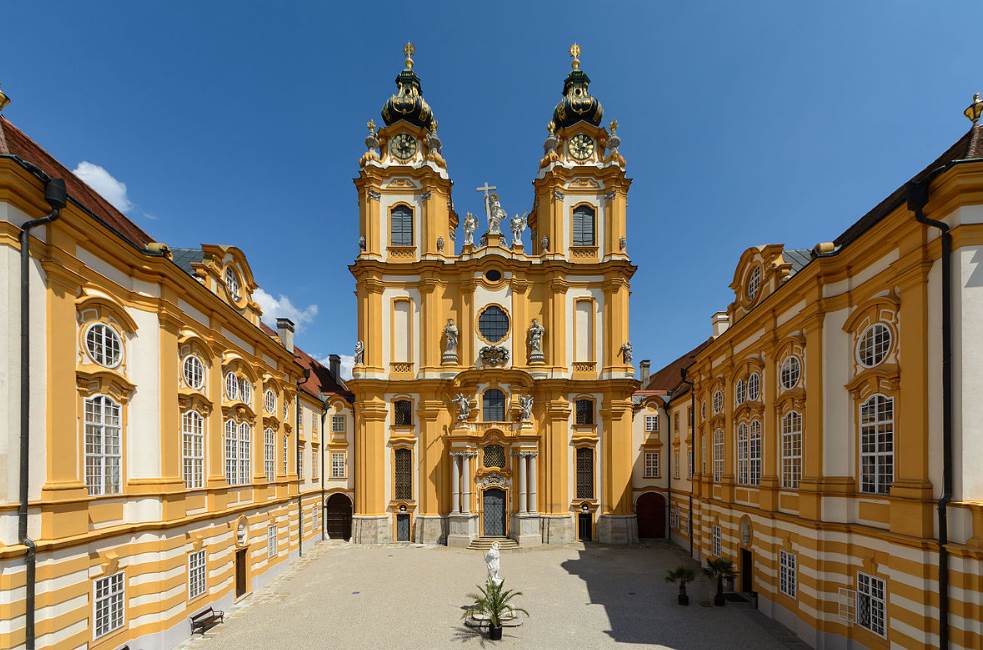This Baroque building majestically overlooks a valley in Austria and features the tomb of an Irish saint who was born in the 10th century.
These are just some of the many interesting things we can say about this Benedictine abbey, a structure that has a history that goes back to the 11th century.
Let’s take a closer look at some of the most interesting facts about Melk Abbey, one of Austria’s architectural marvels.
1. The abbey overlooks a major European river in the northeast of Austria
Melk Abbey is a Benedictine abbey that overlooks the town of Melk. This town is situated in Lower Austria, the utmost northeastern of the 9 states of Austria.
This town has a population of just over 5,000 inhabitants and was established on the banks of the Danube River, the second-longest river in Europe which flows through several European capitals. This includes Austria’s capital Vienna.
The location of this beautiful abbey on top of a rocky outcrop overlooking the river is nothing short but breathtaking, that’s for sure.
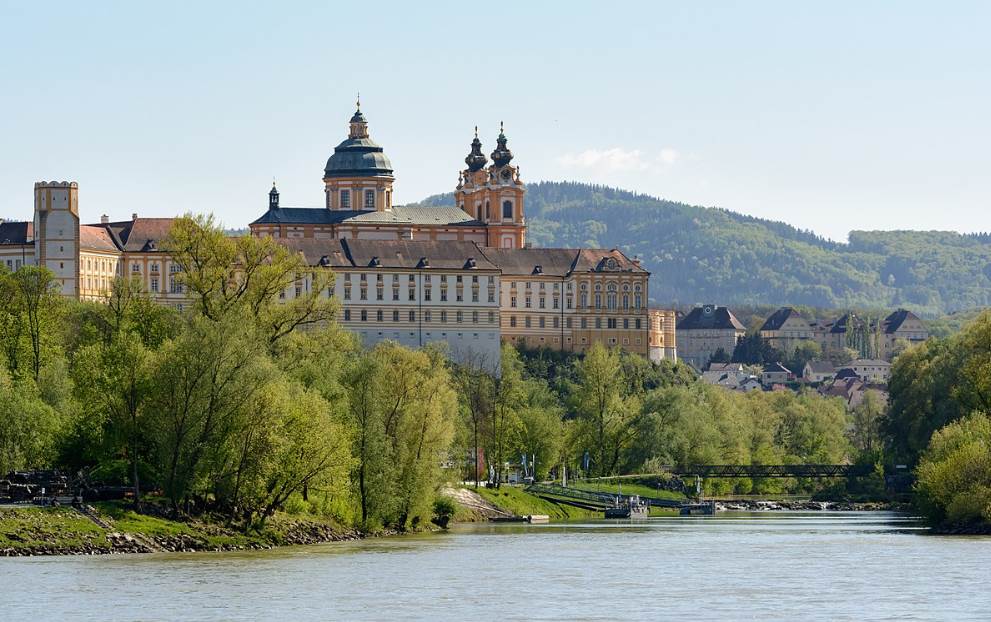
2. It was established inside a castle owned by the Margrave of Austria
The magnificent Baroque building isn’t nearly 1,000 years old, but the abbey itself is almost a millennium old.
It was established by Benedictine monks from Lambach Abbey, an even older abbey in the region about 100 kilometers to the west of Melk.
Lambach Abbey was founded in the year 1040 by Count Arnold II of Lambach-Wel, the son of a local bishop.
This connection to the local nobility resulted in the donation of a castle owned by Leopold II, Margrave of Austria, to the monks of Lamback Abbey in 1089.
Leopold the Fair, as he is also known, was a member of the House of Babenberg, the first ruling dynasty of the Margraviate of Austria during this period in history.
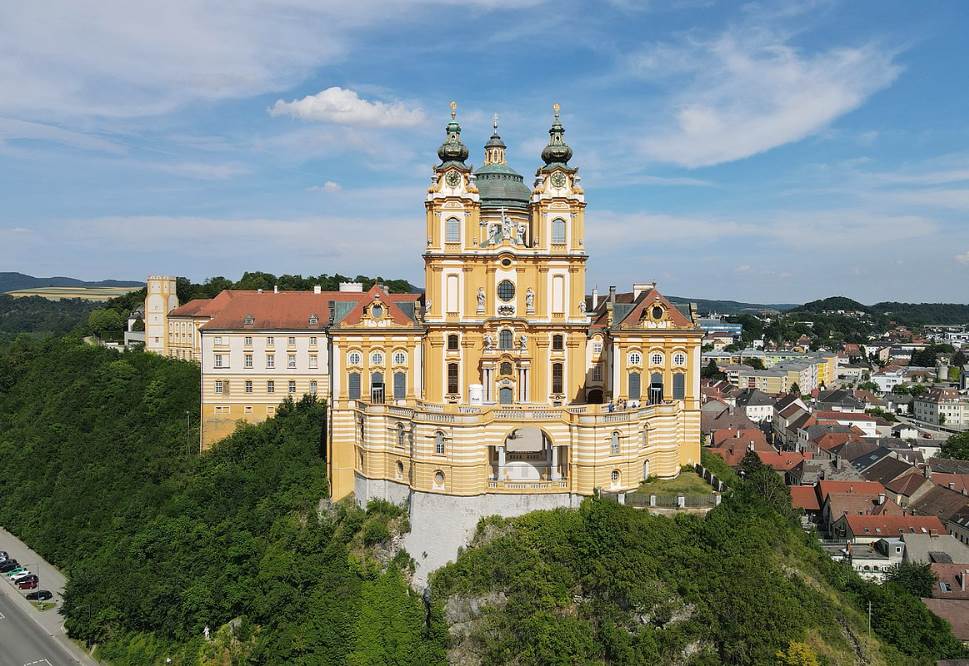
3. A Roman Catholic school was established here in the 12th century
The castle was transformed into a monastery and gradually expanded over the centuries. The first addition was a Roman Catholic school that was established here in the 12th century.
This gymnasium is called Stiftsgymnasium Melk and has been operational ever since it was established. This makes it one of the oldest continuously operating schools in Austria.
The first mentions of this school date back to the years 1140 and 1160 when it was mentioned in the records of a local parish registry.
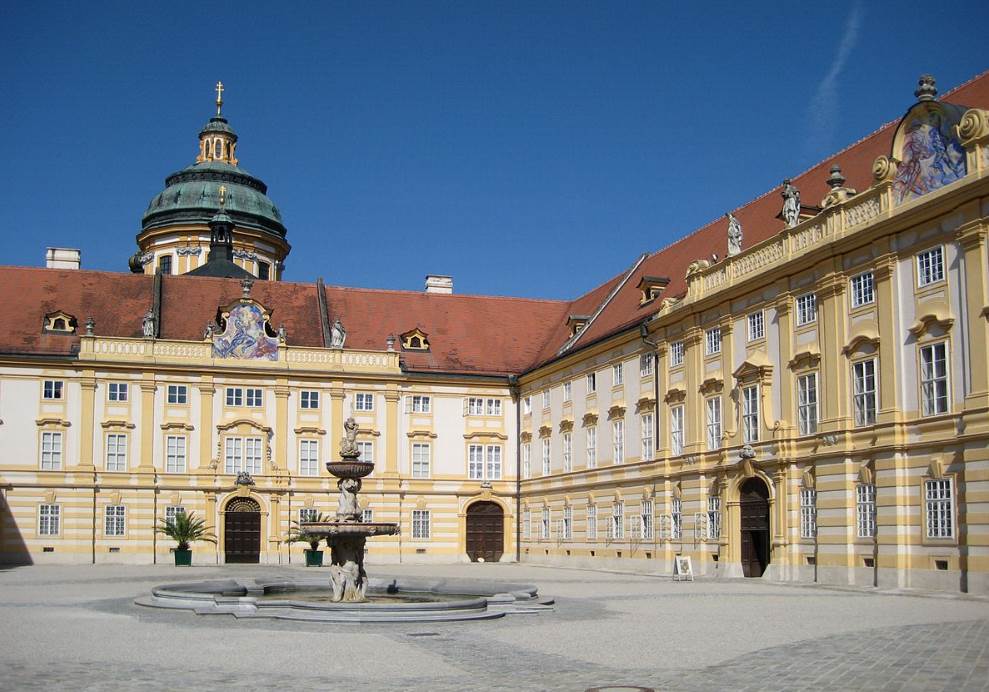
4. The amazing Baroque building we see today was constructed in the 18th century
The magnificent Baroque building we can admire today isn’t the original version of the medieval abbey and gymnasium.
The building was designed by a leading Austrian Baroque architect named Jakob Prandtauer (1660-1726) and completed between 1702 and 1736.
This means that the architect didn’t live to see his ultimate masterpiece completed because he passed away a decade before it was completed.
The most notable feature of the structure is the abbey church which features 2 distinctive towers and a large central dome.
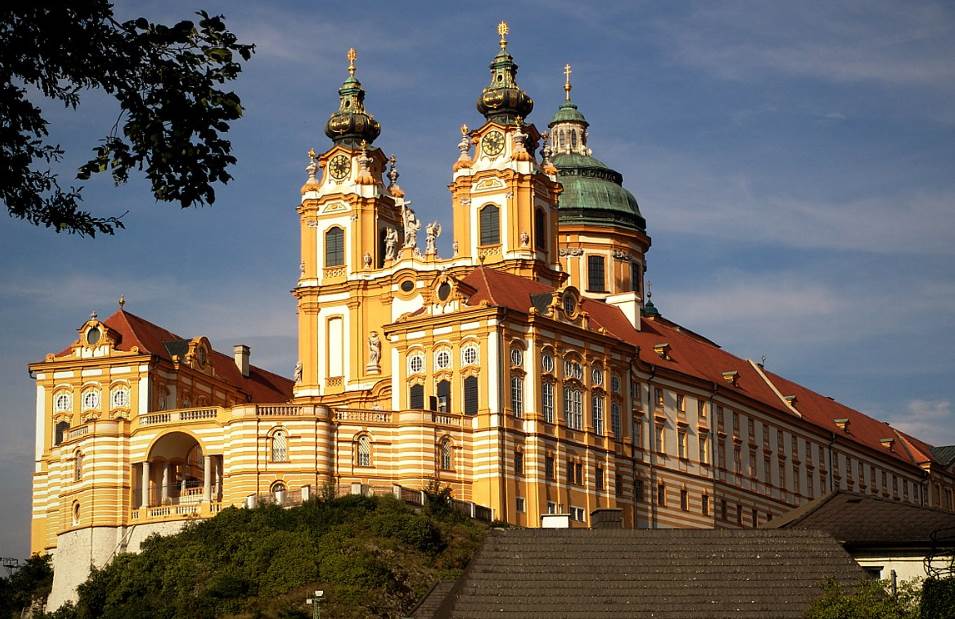
5. The abbey was completely restored in the late 20th century following a fire
The building looks the same as it does upon completion today, but that doesn’t mean that it hasn’t been restored.
Remarkably, Melk Abbey managed to escape several devasted events which could have flattened the building. These include the:
- The dissolution of abbeys under Emperor Joseph II in the 1780s and 1790s.
- The Napoleonic Wars in the early 19th century.
- The period following the so-called “Anschluss” in 1938 when many religious buildings became state property.
This remarkable survival of the abbey during these events makes it all the more unfortunate that large parts were destroyed because of a fire in 1974.
Luckily, the stunning abbey building was completely renovated between 1978 and 1995 and restored to its former glory.
It has been one of the most popular tourist attractions in the region for multiple decades, and it’s not hard to understand why, isn’t it?
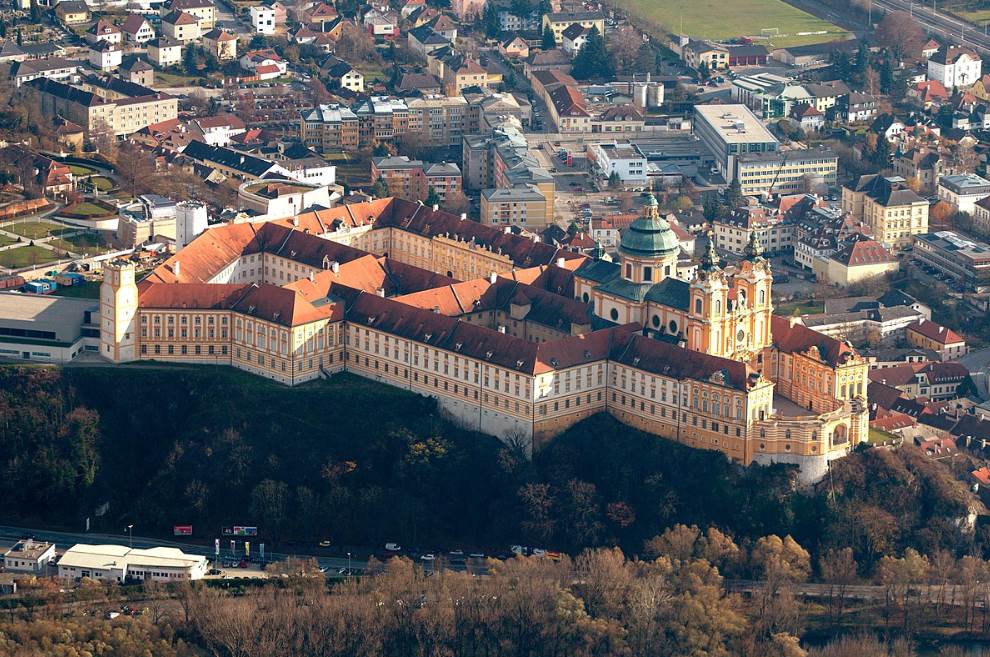
More interesting facts about Melk Abbey
6. Stiftsgymnasium Melk integrated a “Scriptorium” into its institution. This was a place where students wrote and created manuscripts. It became one of the most important production centers of manuscripts in Europe during the Middle Ages.
7. The production of writings resulted in an enormous collection of Medieval manuscripts emerging. The library today still holds one of the most stunning collections of exclusive medieval manuscripts in the world.
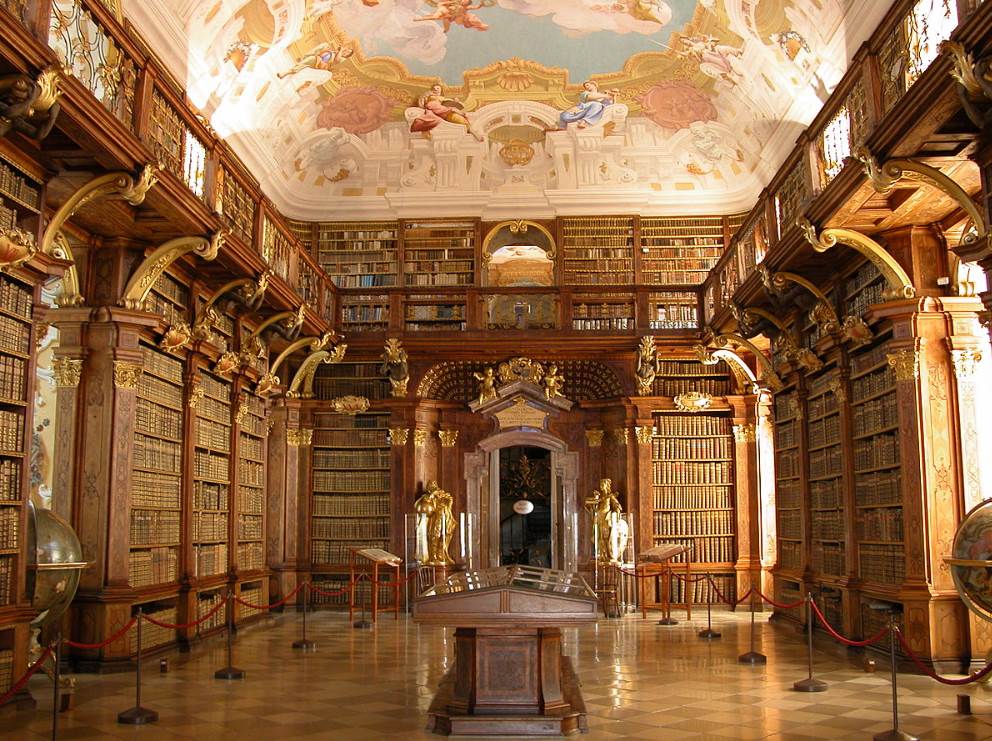
8. The exterior of the building looks magnificent, and the same can be said about the interior of the building. The library was decorated with frescoes painted by Austrian artist Paul Troger and the abbey church with frescoes by Austrian painter Johann Michael Rottmayr.
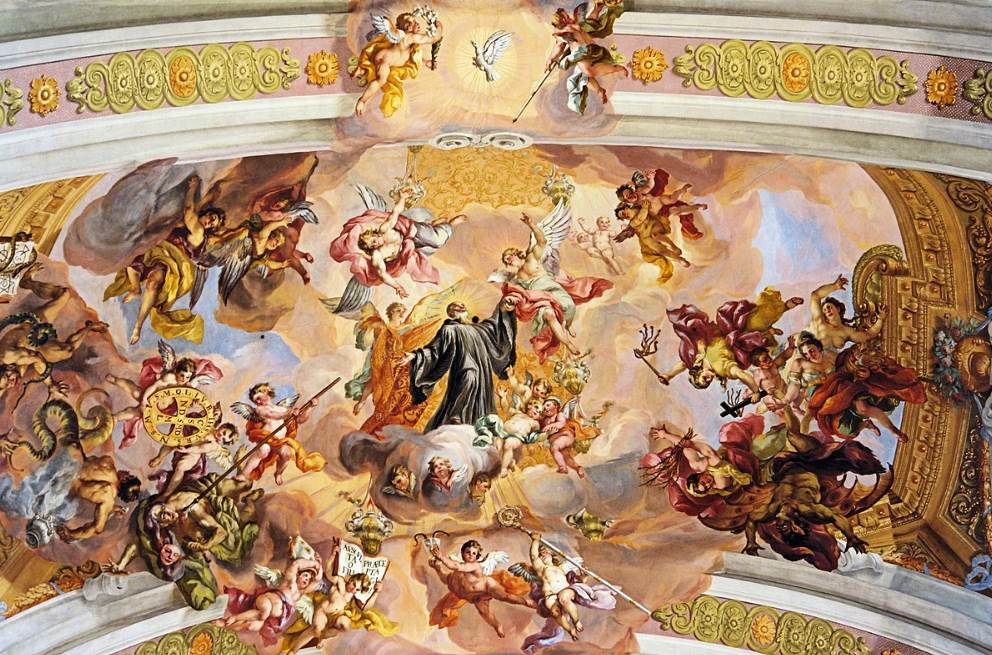
9. Johann Michael Rottmayr (1656-1730) was a very influential Baroque artist because he also painted the frescoes that decorate Karlskirche in Vienna. These were related to the life of Charles Borromeo to whom the church in Vienna was dedicated.
10. If you want to travel from the library to the abbey church you can do so via a spiraling staircase. This architectural feature resembles the Bramante Staircase at the Vatican Museums.
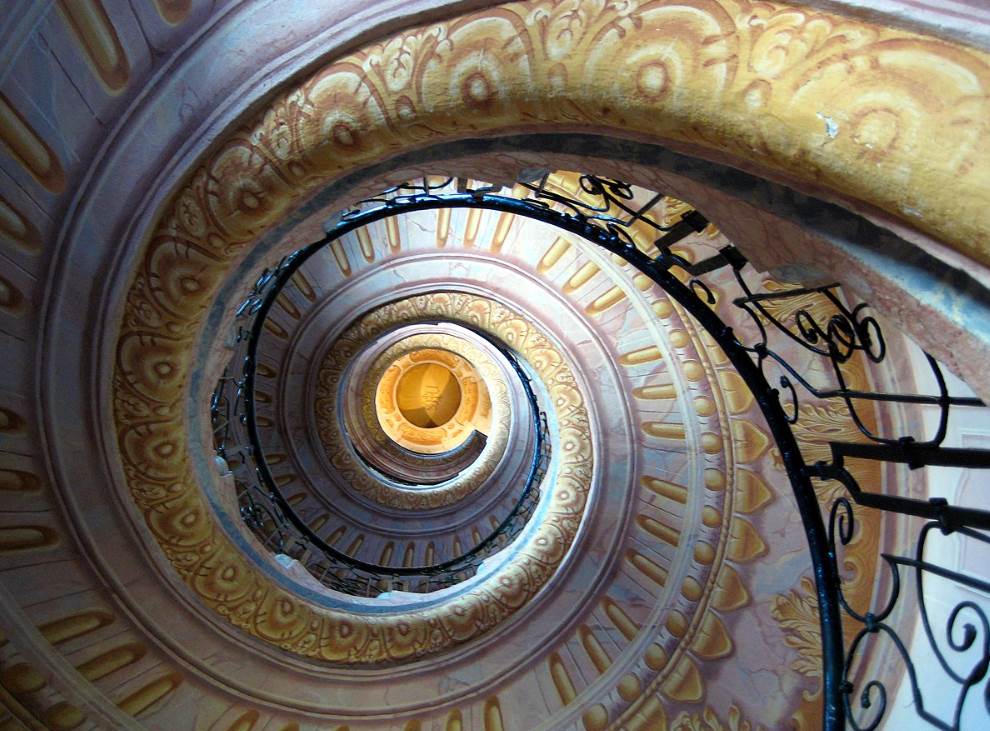
11. The abbey is part of a UNESCO World Heritage site called the “Wachau Cultural Landscape.” This picturesque valley was formed by the Danube River and has a length of 36 kilometers (22 miles). It is one of the most popular tourist destinations in all of Austria.
12. Apart from serving as an active Roman Catholic School with over 900 pupils today, Melk Abbye also serves as a major attraction in the region.
Visiting the abbey to discover its remarkable architecture, medieval manuscripts, medieval artifacts, and incredible artworks should be on top of your bucket list if you plan to visit Austria.
